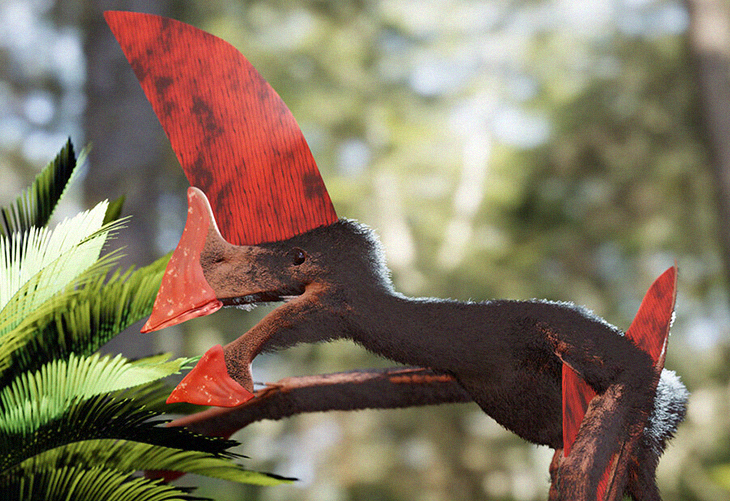
Paleontologists search high and low for dinosaur remains. They go to the site and dig endlessly in order to put together the reptile’s bones. However, who would have ever thought that they’d come across one that’s sitting in someone’s home.
This story may be one for the books. While researchers have been studying the anatomy of a dinosaur for years at a time, the almost complete skeleton they’ve recently recovered gives them a glimpse of what the species was truly like.
The officials came into a series of smuggled paleontological finds that were once recovered in a 2013 police raid in Santos Harbor, Brazil. What was amazing about the find was the fact it contained the most complete crested pterosaur skeleton ever to be found.
The specimen was seized and along with it were a total of 3,000 other fossils that were headed for illegal fossil trade. They got their hands on it and the skeleton recovered has opened up a new world of understanding about these mysterious and fascinating flying animals.
The pterosaur belongs to the species Tupandactylus navigans. Its most distinct trait is its gigantic head crest that would dwarf any cassowary known. The bones had been preserved in limestone from the Early Cretaceous period, which was around 140 to 100 million years ago.
The bones had been sawed into six pieces. The smugglers did this so that the stolen items were easier to hide. Then, the limestone block that held the skeleton needed to be carefully reassembled, and eight years after it was found by officials, Victor Beccari and his colleagues at the University of São Paolo presented the skeletons in a study. The provided a full description of the dinosaur and they discovered that this may actually have been more like a peacock than an eagle.
The pterosaur’s head crest was a site to behold, and it was well preserved. This came as a surprise because the animal’s skull and the soft hollow bones made the process of fossilization a little more difficult and challenging. Typical of tapejarids, the animal’s group, T. navigans had a head crest that was half the size of its body, it had a long neck and long legs, but the wings were short.
Tupandactylus navigans.
.
Variant 1
.#paleoart #pterosaur #paleontology pic.twitter.com/7KT7dgZVr0— Matheus (@matheusfgadelha) August 25, 2021
When it came to the T-rex, people often theorized that it was mostly a scavenger. This fact scared and annoyed a good number of schoolchildren in the late ’90s. As for this most recent find, the scientist from Brazil has a new theory on how the mighty pterosaur spent its life.
“Pterosaurs were already mind-blowing before, but this new specimen, with its huge, awkward crest and long neck, is mind-boggling because—sort of like [flashy] peacock tails—they would have made him an attractive mate, but an easy target for predators and a poor flyer,” Beccari said when she spoke to New Scientist. She continued, “Like the peacock, it probably spent its time eating fruit off the ground or using its long neck to grab food from higher bushes.”
The researchers also performed scans up the nasal cavity that showed how the animal had certain adaptations that were designed for powered flight. The findings suggest how the animal needed to use its wings in certain circumstances. An example of which was to escape from predators.
In hindsight, it seems quite fitting to compare the pterosaur to a peacock. After all, weren’t they the predecessors of birds?
What are your thoughts? Please comment below and share this news!
True Activist / Report a typo


